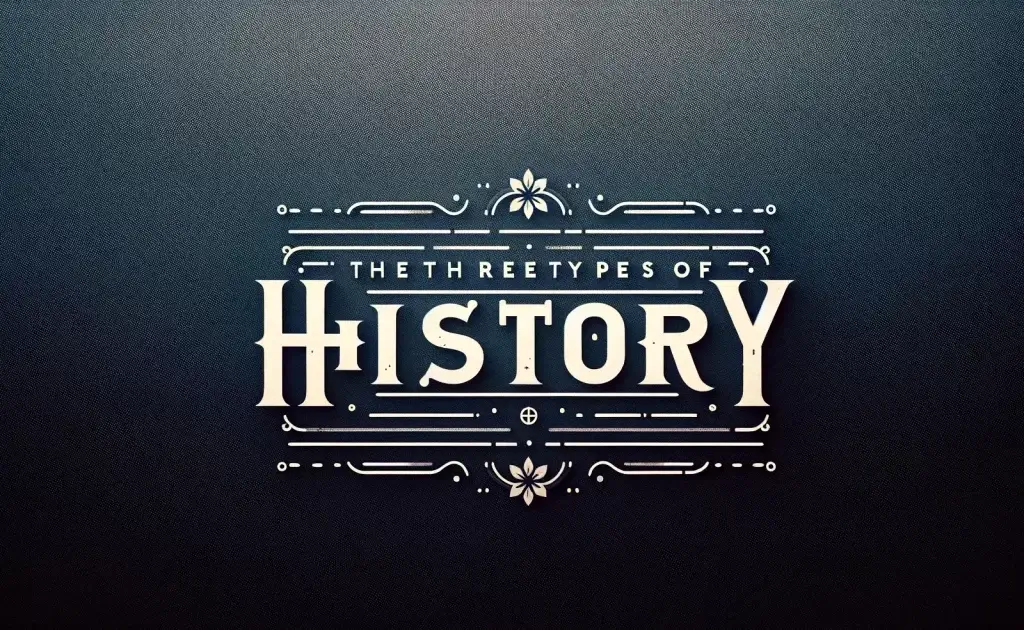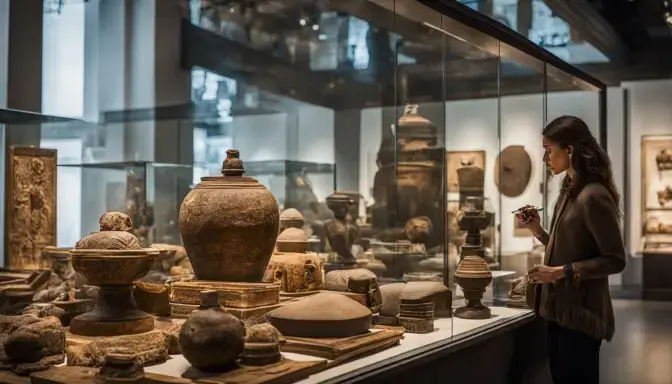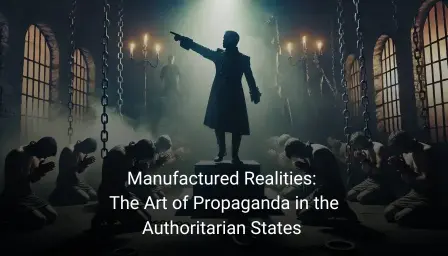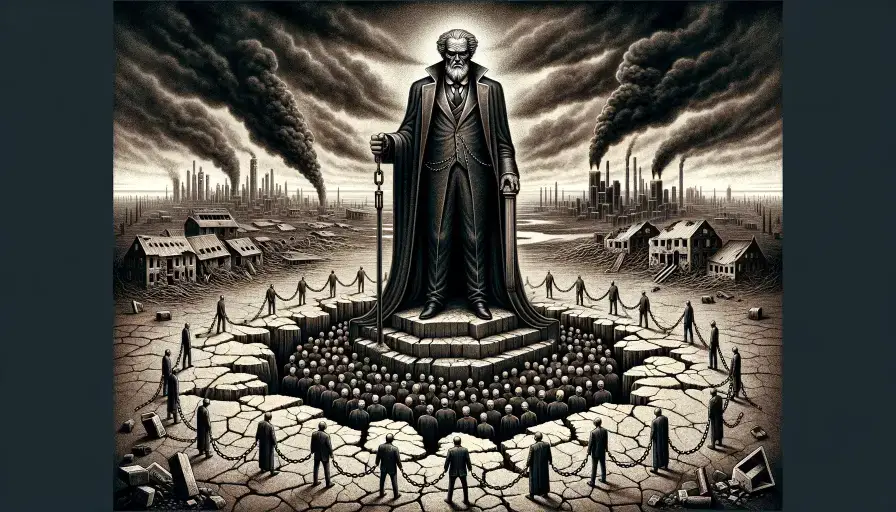History is essential for understanding both the past and the present. However, Friedrich Nietzsche argued that history can be misused or abused if not approached cautiously in his explanation of the three categories of history.
In his seminal essay “On the Uses and Disadvantages of History for Life,” Nietzsche outlined three contrasting philosophies of history: monumental, antiquarian, and critical.
This article will analyze these three types of history, discuss the uses and abuses of historical study, overview the significant branches of history, and emphasize critical lessons from Nietzsche’s influential essay.
Overview of the Discipline of History
The field of history is devoted to the systematic study, research, and interpretation of past events and societies. Historians employ a range of theoretical frameworks and methodologies to analyze continuity and change over time.
History aims to reconstruct past events and explain the causes and significance of various developments.
Some crucial aspects of studying history include:
● Reliance on primary and secondary sources: Historians extract evidence from primary sources created during the historical period under investigation. They also utilize secondary sources produced by other historians.
● Contextualization: Analyzing events and societies within their historical context is vital.
● Causation: Assessing chains of cause and effect helps historians explain pivotal developments.
● Change over time Detecting continuity and change is a core concern of historical research, highlighting the use and abuse of history.
● Historical perspective: Developing a broad perspective that assesses ideas, events, and processes across time and space.
| Type | Definition |
| Primary sources | Materials directly from the historical period studied |
| Secondary sources | Accounts about the past produced after the fact |
Now that we have an overview of some fundamental principles of historical study, we can delve deeper into Nietzsche’s three types of history and the associated uses and disadvantages outlined in his essay.
History and The Distinction between Humans and Animals
The study of history is the critical factor separating humans from other animals. In contrast, animals are destined to live solely in the present moment; the past frequently haunts people.
Throughout human history and events in world history, humans have been preoccupied with the past, studying it and applying it to the future. Animals are also unconcerned with art and science, two things humans crave.
While many historians attempt a scientific approach, history is more of an art form. Historians are studying a period in which they did not live, making inferences from unreliable information fragments.
This is a non-empirical approach and, therefore, distinct from hard sciences. Historians are studying rulers, events, people, and themes. Stories are passed down the generations orally, causing historical events to be heavily biased towards a particular perspective and, therefore, far from authentic.
We must distinguish historical facts from falsehood to prevent social division and conflict and nurture inclusiveness.
History and Life
As we turn back to Nietzsche, it is crucial to remember his methodology. He ponders whether life or history runs the show. Empirically, the answer is obvious: Life is all-encompassing and contains history.
Therefore, history cannot destroy life without also destroying itself. We are now witnessing how history is tearing down countries, spurring ethnic clashes and political tribalism, and causing social turmoil. Historical monuments and artifacts have become a battleground.
Manifold views on history have caused an anti-state and rule-of-law mentality, vigilante justice, and retribution. Because of disputes in history, we have started seeing fragile and powerless states.
We must examine history more authentically to re-establish sovereignty and human rights ideals. We must also end the politics of ethnicity born out of historical disagreements.
As Nietzsche said, “History, conceived as a piece of pure knowledge, once it becomes sovereign, would be a kind of conclusion to living and a final reckoning for humanity.” Let us give high respect and regard to human lives that we lose by squabbling over history.
We can rectify the past by gracious discourse and not by slaughtering an individual human being. When contradiction in history mixes with ethnic legislative issues, it may be a formula for disaster.
The Three Categories of History
Monumental History
The first variety of history Nietzsche discusses is “monumental history.” As the name suggests, this refers to historical narratives and figures that stand out as monumental accomplishments that should inspire greatness in the present day, a concept crucial to different types of history.
Monumental history awakens feelings of reverence and calls modern individuals to ambitious action by highlighting past glories, triumphs over adversity, and transformative revolutions.
Key Aspects
Some major components of the monumental approach to history include:
● Veneration of impactful figures: Lionizing influential leaders, pioneers, and innovators who shaped their era.
● Glorification of pivotal events: Heightened appreciation for watershed moments, victories, inventions, or reforms that advanced civilization.
● Inspiration for the present: Using heightened examples from the past as models to motivate progress in the current age. Examples include the American Revolution and the abolition movement.
Uses of Monumental History
When applied judiciously, monumental history can have significant advantages:
● Inspires ambition and energizes change
● Celebrates accomplishments that advanced society
● Provides exemplars for current leaders and reformers
Disadvantages & Dangers
However, Nietzsche also warns that monumental history has inherent drawbacks if applied simplistically or uncritically:
● Exaggerates the virtues of historical figures and events
● Risks distorting the past through biased, selective memory
● Breeds unrealistic expectations by only celebrating successes
Therefore, while monumental history rightfully honors past glories that advanced civilization, historians must be aware of nuance and prevent mythologizing history from serving present agendas.
Antiquarian History
The second emphasis outlined by Nietzsche is “antiquarian history,” which cherishes historical tradition and lineage with almost religious fidelity. Antiquarian historians are devoted to preserving cultural artifacts, ancestry, rituals, customs, and lore that link contemporary society to earlier periods.
This creates reverence for the past by maintaining continuity with long-standing traditions.
Key Aspects
Notable traits of the antiquarian perspective include:
● Veneration of cultural traditions and folk heritage
● Preserving historical artifacts, sites, architecture, art and lore
● Linking the present with the past through customs and lore
● Appreciating the legacy and longevity of rituals and traditions
Uses of Antiquarian History
The benefits of the antiquarian ethos are numerous, especially when considering the different types of history.
● Strengthens cultural identity and solidarity
● Safeguards traditions from erosion over time
● Grounds society in intergenerational customs
Disadvantages & Dangers
However, Nietzsche contends that antiquarian history also has limitations:
● Breeds reactionary traditionalism and resistance to change
● Can foster xenophobia and intolerance of outsiders
● This leads to nostalgia or romanticization of the past
● Emphasis on lineage over merit or ethics
In essence, antiquarian history crucially preserves cultural heritage and identity across generations yet can also promote regressive nativism if not balanced with critical reason and ethical universalism.
Critical History
The final historical current identified by Nietzsche is “critical history,” which ruthlessly interrogates the past by questioning traditions, exposing biases, assessing ethical implications, and seeking progress beyond former paradigms.
This contrasts with naive monumental and antiquarian history, resisting the glorification or veneration of the past simply for tradition’s sake.
Key Aspects
Significant traits of critical history include:
● Subjecting historical assumptions and narratives to skeptical analysis
● Assessing the ethical implications and harms of past systems and actions
● Overturning traditions that do not meet current ethical or rational criteria
● Seeking liberation from outdated ideas that held back progress
Uses of Critical History
The advantages of critical history are:
● Frees society from restrictive paradigms and reactionary traditions
● Corroborates or refutes historical claims based on factual evidence
● Provides vital enlightenment regarding past failings
● Reassesses traditional beliefs in light of new evidence, a practice central to different branches of history.
Disadvantages & Dangers
Perils of critical history are:
● Potentially undermines all prevailing values by questioning everything.
● It can breed cynicism regarding human nature if focused solely on flaws.
● Risks throwing out still-useful traditions simply because they are old, a common issue in understanding ancient and medieval history.
● Might derail change by only dwelling on historical harms
Thus, critical history crucially lifts the veil on historical biases and ethical harms but should be tempered with nuance to retain beneficial traditions and fuel ethical progress.
Branches of Historical Study
Beyond Nietzsche’s three philosophical orientations toward history, academic historians specialize in various crucial branches based on periodization, geography, or topical focus. Major historical branches include:
| Branch | Focus | Example Topics |
| Cultural | Ideas, norms, creative expression | Art, literature, values |
| Social | Societal groups, demographics, daily life | Minorities, families, education |
| Political | Government, policy, war, statecraft | Laws, revolutions, empire |
| Economic | Trade, business, technology, resources | Industry, finance, agriculture |
| Intellectual | Concepts, belief systems, ideologies | Philosophy, science, medicine |
| Diplomatic | International relations, treaties, diplomacy | Wars, borders, alliances |
This table summarizes a few key focal areas that anchor the discipline of history across topics, periods, geography, and methodology.
Key Takeaways and Lessons
In closing, what lessons can be gleaned from Nietzsche’s seminal essay about monumental, antiquarian, and critical applications of history in understanding life and society?
Balanced Approach Required
● Productive historiography requires balancing these orientations.
● Exclusive focus on one causes significant limitations or distortions.
● Integrating critical ethics, inspirational accomplishments, and cultural inheritance enables historical understanding that best serves the growth of civilization.
History Cultivates Progress But Also Risks Stagnation or Cynicism
● History is indispensable for progress by highlighting past harms (critical history), envisioning an improved future (monumental history), and providing cultural roots (antiquarian history)
● However, imbalance breeds distortions like extreme glorification of the past, reactionary traditionalism, or excessive skepticism regarding overturning ingrained social systems and beliefs.
In essence, Nietzsche concludes that society requires measured integration of the monumental, antiquarian, and critical orientations toward history to productively benefit from studying the complex legacy of the past.
Modern Debates Among Historians
Vibrant debates persist among historians regarding analytical models, appropriate sources, narrative strategies, generalizability, causation, and factual reliability. Key disputes include:
● Tensions between particularism and universalism
● Relative merits of structural vs agency-driven models
● Contrasting microhistorical vs macrohistorical lenses
● Debating nomothetic inferences from historical patterns
● Disagreements regarding the interplay of continuity and change
Thus, rather than a monolithic discipline seeking an authoritative master narrative, academic history thrives on epistemological tension and diversity of perspective reflected in the major branches and approaches outlined here.
Ongoing Relevance of Nietzsche’s Framework of the three categories of history
Despite expansions in historical specialization and methodology since Nietzsche wrote in the 19th century, his typology of monumental, antiquarian, and critical history retains broad relevance.
All historical research relies on primary sources and must grapple with continuity, change, and the complex ethical legacy of past societies. Nietzsche’s essay remains seminal in highlighting these hermeneutic challenges.
His proposed triad of orientations provides a conceptual touchstone for avoiding distortions like excessive glorification, reactionary traditionalism, or corrosive skepticism regarding historical interpretation and applied value.
Thus, Nietzsche’s cautionary treatise remains essential for refining historical practice and philosophy for professional and amateur historians.
Conclusion
Exploring the three categories of history opens doors to understanding our past in a new light. It highlights how political, social, and cultural narratives shape our world. This journey through time reveals facts and the evolving nature of human society.
Each category offers unique insights into how we have grown and changed. Engaging with history in this way challenges us to think critically about where we come from and where we might be headed.
Our history analysis should be highly regarded where it improves the lives of today’s people. Our historical approach should be authentic and reasoned for the good of humankind.
Overemphasizing that history is unadulterated and unstained is dangerous and destructive. Persistently scorned history leads to indifference and division. These two powers or ways of outlook pull things within the inverse course, causing chaos and turmoil.
The framework we use to analyze history must be balanced, stable, and unified. This way, we can avoid the inevitable chaos and division resulting from a negative approach to past events. Let us come to our natural faculties of senses and be sensible in seeing what we have and the valued legacies.
To overcome yesterday’s pain, we must focus on today’s joy and great past values and leave our children with a beautiful legacy. Let us sacrifice ourselves for the common good of society and the nation-state.
Let us act with balance, good judgment, and common sense on issues that appear to partition us to avoid divisions and create a unified future.
Overall, we hope that the three categories of history offer valuable insights into the study of history and the importance of a balanced approach to historical analysis.
Citizenship is pluralistic, tolerant, and inclusive and promotes societal good in consensual coexistence.
Citations:
Nietzsche, Friedrich, whose works often challenge the ways we focus on the history of philosophical thought. On the Uses and Disadvantages of History for Life. Translated by R.J. Hollingdale, Cambridge University Press, 1997.
Berkhofer, Robert F. Beyond the Great Story: History as Text and Discourse. Belknap Press, 1995.**










